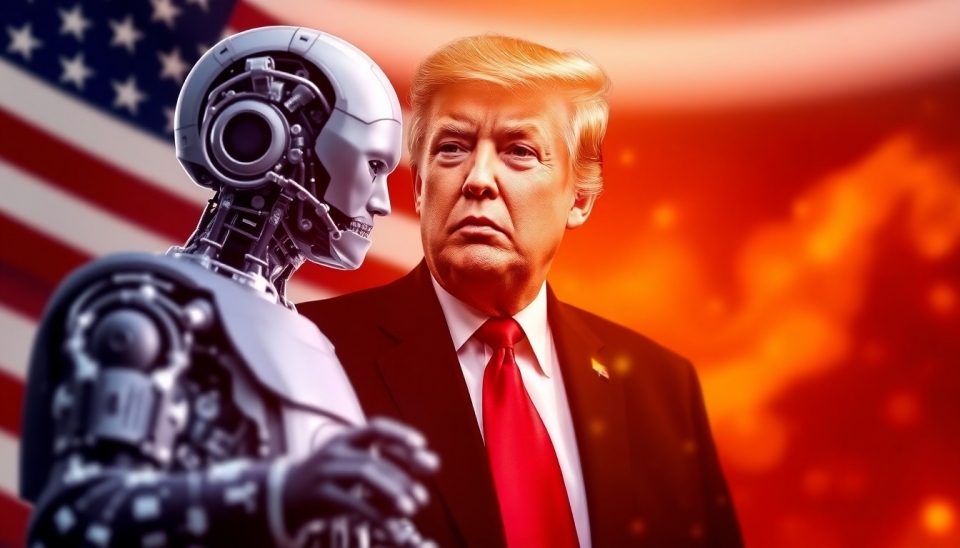
In a bold move that has stirred significant debate among technology experts and policymakers, former President Donald Trump has announced intentions to cut federal funding for artificial intelligence (AI) research and development. This controversial proposal raises alarms about America's ability to maintain its competitive edge in the rapidly evolving AI sector, a field critical to global economic dominance and national security.
Trump's plan, which he unveiled during a rally in March 2025, aims to divert funds from what he describes as "wasteful government programs" to bolster other areas he deems more essential. However, this approach comes at a time when the U.S. is already facing fierce competition from countries like China, which continues to invest heavily in AI technology. Experts warn that reducing funding for AI could lead to significant setbacks in innovation and technological advancements.
The potential cuts have drawn criticism from a wide range of stakeholders, including tech leaders, researchers, and even some lawmakers. They argue that the U.S. has consistently led the world in AI development, largely due to federal investments in research grants, educational programs, and innovation hubs. Diminishing these resources could hinder the country’s ability to compete in a field that underpins a plethora of industries, from healthcare to transportation.
Trump's supporters frame the funding cuts as a necessary overhaul of federal spending that prioritizes economic growth and job creation. They assert that reallocating funds could result in better outcomes for American taxpayers. Yet, this stance is met with skepticism from those who emphasize that AI is an integral component for future economic growth and workforce development.
Industry leaders express that a decline in federal support could stifle the momentum of startups and smaller enterprises that are crucial to fostering innovation. For instance, venture capitalists have indicated that their willingness to invest in nascent AI companies is often bolstered by government funding and initiatives. Without these, the fear is that a vacuum of creativity and technological advancements could emerge, making the U.S. lag behind its competitors.
In response to these proposed cuts, various advocacy groups are mobilizing to counteract Trump's plans. They argue for maintaining and even increasing funding for AI research, emphasizing not only the economic implications but also the societal benefits of advanced technology, including improvements in healthcare diagnostics, climate modeling, and education systems.
It remains to be seen how Congress will respond to these proposed funding cuts. While some Republican lawmakers support Trump’s fiscal conservatism, others are wary of the potential implications for U.S. tech leadership. The debate is likely to carry into future legislative sessions, as the administration will need to balance budgetary considerations with the imperative to remain competitive in the global tech landscape.
As the discussion unfolds, experts continue to highlight the urgency for a coherent strategy to ensure that the U.S. remains at the forefront of AI innovation. The narrative may soon pivot towards collaborative efforts between the public and private sectors to address the challenges posed by these drastic funding adjustments effectively.
In conclusion, Trump’s proposed funding cuts present a multifaceted dilemma with far-reaching consequences. As artificial intelligence becomes increasingly central to numerous aspects of modern life, the stakes are higher than ever for the United States. Navigating this complex landscape will require careful consideration and proactive measures from all parties involved.
#AI #FundingCuts #Trump #TechCompetitiveness #Innovation #ArtificialIntelligence #USPolicy #GovernmentFunding
Author: Emily Collins




